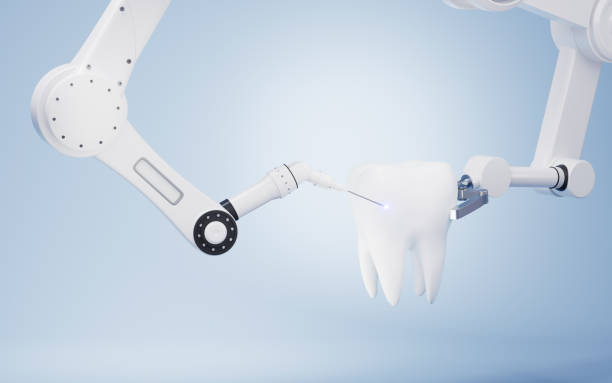Dental abrasive tools have undergone significant advancements in recent years, thanks to the latest technological developments. These advancements have led to more precise, efficient, and effective dental procedures, benefiting both dental professionals and patients.
The latest technological advancements in dental abrasive tools include nanotechnology, 3D printing, laser technology, artificial intelligence, robotics, wireless technology, virtual reality training, dental air abrasion technology, smart dental abrasive tools, and biocompatible dental abrasive tools.
Nanotechnology in Dentistry: Precision and Control in Dental Polishing
Nanotechnology involves the use of nanoscale particles in dental abrasive tools. These particles are highly effective in removing stains and discoloration from teeth, and they can also provide greater precision and control in dental polishing. Nanotechnology also has the potential to improve the strength and durability of dental restorations, making them last longer and function better.

3D Printing: Custom-Made Abrasive Tools for Improved Accuracy and Efficiency
3D printing involves using CAD software to create custom-made dental abrasive tools. These tools can be tailored to the specific needs of each patient, allowing for greater precision and accuracy in dental procedures. 3D printing can also reduce costs and turnaround times, making it an attractive option for dental professionals.

Laser Technology: A Gentle and Precise Alternative to Traditional Drilling
Laser technology is highly effective in cutting and shaping teeth, as well as removing surface stains and discoloration. Laser technology is less invasive than traditional drilling methods, which can reduce patient discomfort and recovery times. Lasers can also be used to treat gum disease and other oral health conditions.

Artificial Intelligence: Personalized Treatment Plans and Improved Patient Outcomes
Artificial intelligence algorithms can analyze data from dental procedures and make intelligent decisions about how to best approach each procedure. This can improve precision and efficiency in dental procedures, as well as reduce the risk of human error. AI can also improve patient outcomes by providing personalized treatment plans based on individual patient needs.
Robotics: Automating Routine Procedures for Improved Efficiency and Patient Comfort
Robotics can automate many routine dental procedures, such as polishing and scaling, freeing up time and resources for more complex procedures. Robotics can also improve patient comfort and reduce the risk of human error.

Wireless Technology: Cordless Tools for Improved Mobility and Patient Comfort
Wireless dental abrasive tools are cordless, allowing dental professionals to move more freely around the patient's mouth without the constraints of cords and wires. This can improve efficiency and reduce the risk of accidents and injuries. Wireless dental abrasive tools are also more comfortable for patients, as they don't have to worry about cords and wires getting in the way.
Virtual Reality (VR) Training: Simulating Real-World Dental Procedures for Skill Development
Virtual reality training involves simulating real-world dental procedures in a virtual environment, providing hands-on training for new and experienced dental professionals. This can improve skill development and reduce the risk of errors and accidents during actual procedures. VR training can also reduce costs and reduce the need for live training sessions, making it an attractive option for dental professionals.

Dental Air Abrasion: A Less Invasive Alternative to Traditional Drilling Methods
Dental air abrasion is a gentle alternative to traditional drilling methods that uses compressed air to remove tooth decay and prepare teeth for restorations. Air abrasion is less invasive and less uncomfortable for patients, making it an ideal tool for many dental procedures. Air abrasion also reduces the need for anesthesia in some cases, further improving patient comfort.

Smart Dental Abrasive Tools: Real-Time Monitoring and Control for Improved Performance
Smart dental abrasive tools integrate sensors and microchips into abrasive tools, allowing dental professionals to monitor and control their performance in real-time. This can improve precision and efficiency, as well as reduce the risk of damage to teeth and gums. Smart dental abrasive tools can also be programmed to adjust their performance based on individual patient needs.
Biocompatible Materials: Eco-Friendly Dental Abrasive Tools for Sustainable Dentistry
Biocompatible dental abrasive tools use eco-friendly materials that are biodegradable and sustainable. These tools reduce the impact of dental procedures on the environment while still providing high-quality dental care to patients. Biocompatible dental abrasive tools are becoming increasingly popular as dental professionals become more environmentally conscious.
Conclusion: The Future of Dentistry with the Latest Technological Advancements in Dental Abrasive Tools
In conclusion, the latest technological advancements in dental abrasive tools have revolutionized the field of dentistry. These advancements have improved precision, efficiency, and patient outcomes, making dental procedures more comfortable and effective than ever before. As dental professionals continue to adopt these new technologies, the future of dentistry looks brighter than ever.



